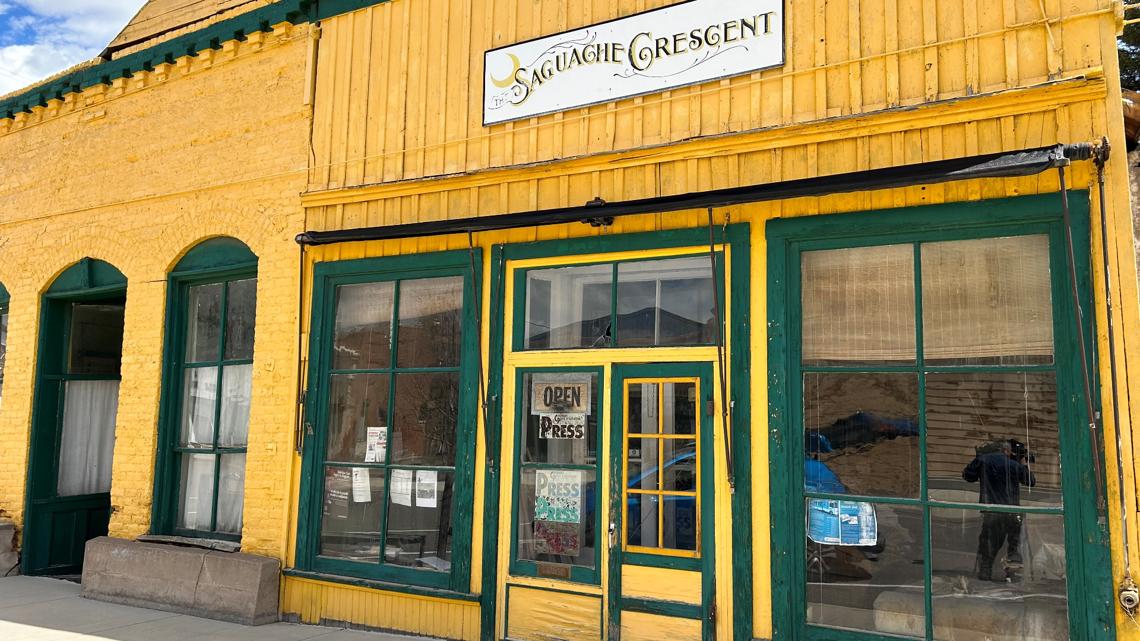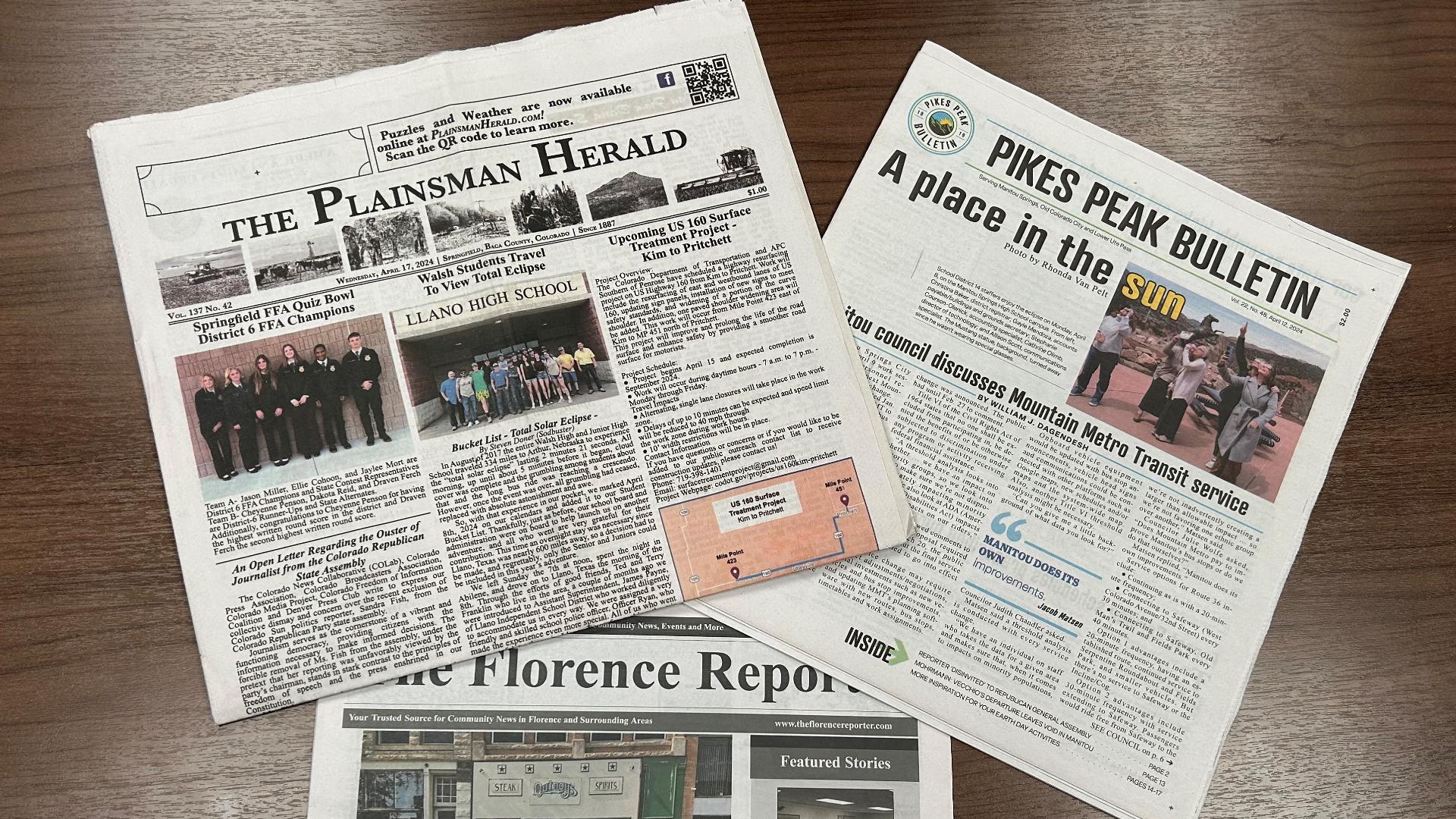DENVER — In 2009, when the Rocky Mountain News disappeared, people said newspapers were dead. No one reads the actual paper, they insisted – everyone is online.
“I get my news from Facebook and Tic Tok” we kept hearing. “Why do I need a newspaper?”
But now, more than a decade later, newspapers are making a comeback, especially in small towns and rural areas of Colorado.
It hasn’t been easy. Publishers are hard pressed to survive but have used many creative ways to keep going.
The timing couldn’t be better. Study after study shows that bad things tend to happen when newspapers aren’t around.
“Corruption can spread, corporate malfeasance can go up,” said Colorado College Journalism Professor Corey Hutchins.
“Pollution can go up; municipal bond rates go up in areas they’ve tracked where newspaper news organizations have gone out of business.”
Earl Watt, who publishes a newspaper in Liberal, Kansas put it this way.
“We’re a watchdog. We’re not an attack dog, we’re not out looking to get anybody. We’re not a lapdog, to tell how pretty everything is. We’re a watchdog. We’re watching. And when we need to, we bark.”
RELATED: Denver Post, 7 other newspapers sue ChatGPT-maker OpenAI and Microsoft for copyright infringement
The reemergence of newspapers is good news.
Some surveys show 2,200 weekly papers have closed nationwide due to costs, including print, delivery, and staffing. In Colorado, 52 newspapers have gone out of business over the last decade. But many of them have started back up, or new papers have taken their place.


Some use the traditional business model of selling advertising and subscriptions. Others are now non-profits and rely on grants and donations in addition to subscriptions.
One we found is a one-man band newspaper. The Florence, Colorado Reporter is located wherever Kevin Mahmalji and his computer are located.
He covers the stories, takes the pictures, writes, edits, puts it all together and emails it to a printing company near Chicago. When they mail him the papers back, he even delivers them.
“There’s so much at stake, it’s too important to kinda just walk away," Mahmalji said. "I’m stuck. I’m stuck you know, but I’m glad. It’s important work.”
There’s a weekly newspaper in the small town of Saguache, in the San Luis Valley called the Saguache Crescent. It started in 1882 and has been run by 3 generations of the same family since 1917. And what makes it unique, it’s printed on a vintage linotype machine.


Dean Coombs’s family bought it for $6,000 in 1921. It’s a contraption made up for chains, levers, gears and springs – rattling, grinding and plugging away. Metal type is set by Coombs, who pecks away on a keyboard that would make most millennials scratch their heads. He sets the order of the letters, and the machine does the rest.
It’s archaic, not very efficient, and it works because Coombs bought 42 hundred pounds of parts online, after similar machines were retired.
RELATED: Small-town Colorado newspapers stolen after running story about rape charges at police chief's house
He thinks it’s one of only two working linotype machines in the world – the other is somewhere in France, he says.
Dean is 70 now, but not yet ready to retire.
And when he does, what happens to the Crescent?
“I get that question almost endlessly,” he says. “I answer that question kinda like parents talking to their children. I say we’ll see, and that is the truth. I don’t know.”
There are other newspapers in the state surviving because of the hard work, creativity, and passion of the owners and publishers.


In Springfield Colorado, the Plainsman Herald is operating because owner Kent Brooks bought it. Brooks grew up there.
In Manitou Springs, the Pikes Peak Bulletin has been resurrected by Lynn Ettinger Harwell, who didn’t know much about newspapers, but did know about non-profits.
All the successful papers concentrate or their communities core news – city government, schools, the police beat and sports.
And while printing newspapers has been a challenge since a big press in Pueblo went out of business, more help is on the way.
A new printing press will be starting up later this summer, built by the National Trust for Local News, which owns Colorado Community Media.
It produces 2 dozen suburban newspapers. The new press will have the compacity to help out other small papers around the state.
While newspapers are doing pretty well now in many places, will they still be in business a decade from now?
Earl Watts, from the paper in Liberal, Kansas says “that’s up to the public. It’s up to the communities. Do they want to be informed? Do they want the information these people are working so hard to give them?”
I imagine we’ll read the answer to that question down the road – in a newspaper.
SUGGESTED VIDEOS: Latest from 9NEWS

